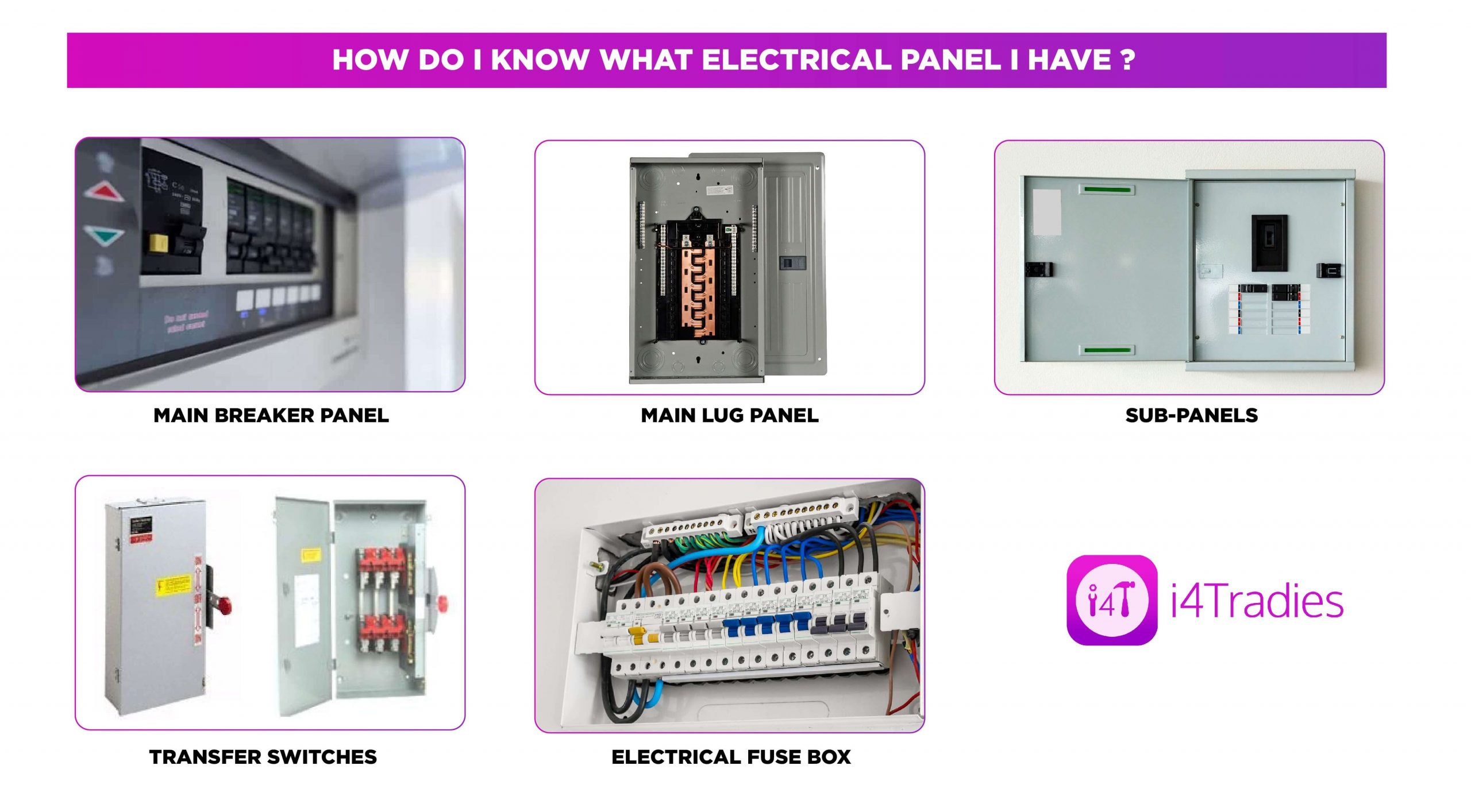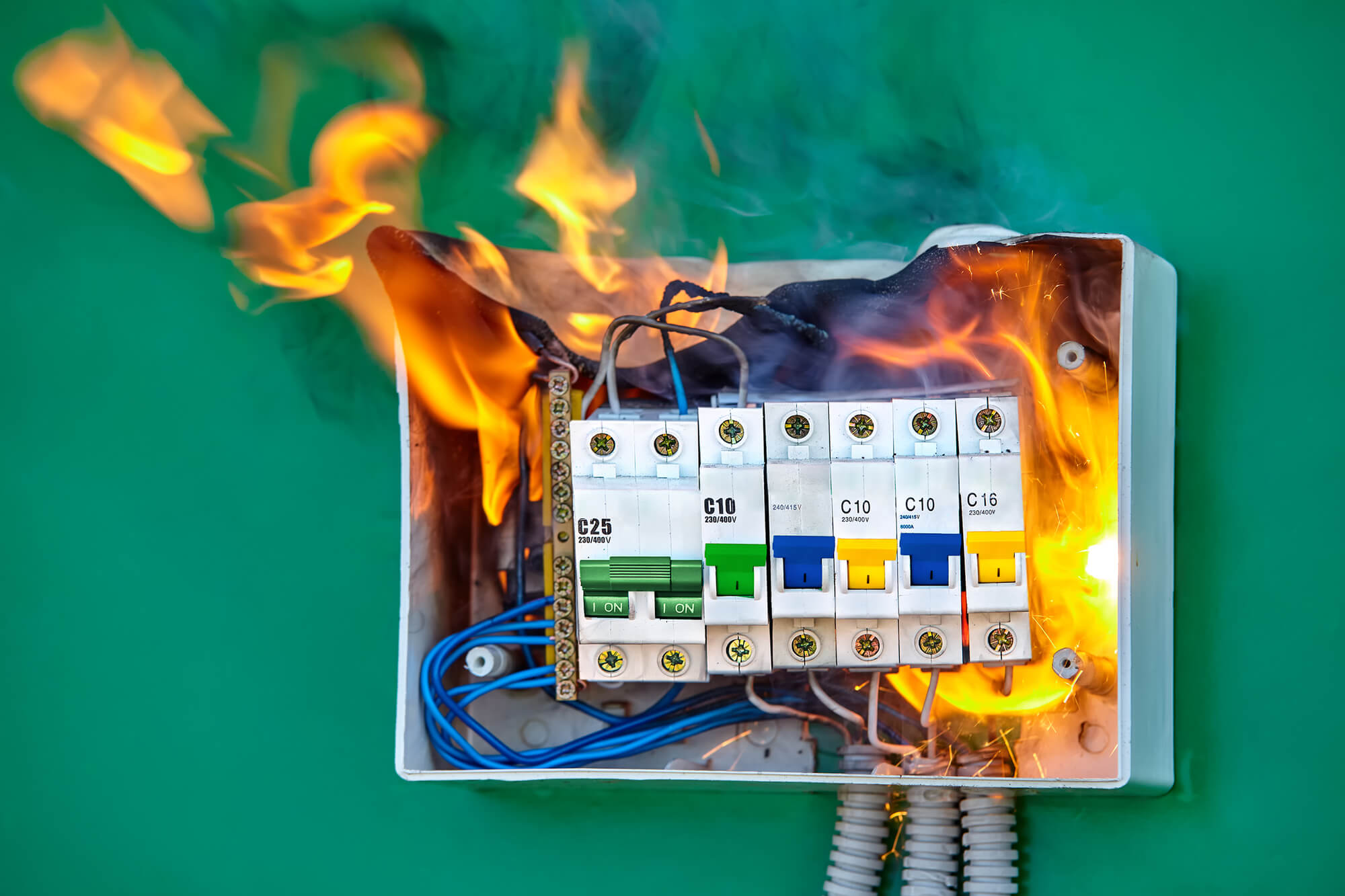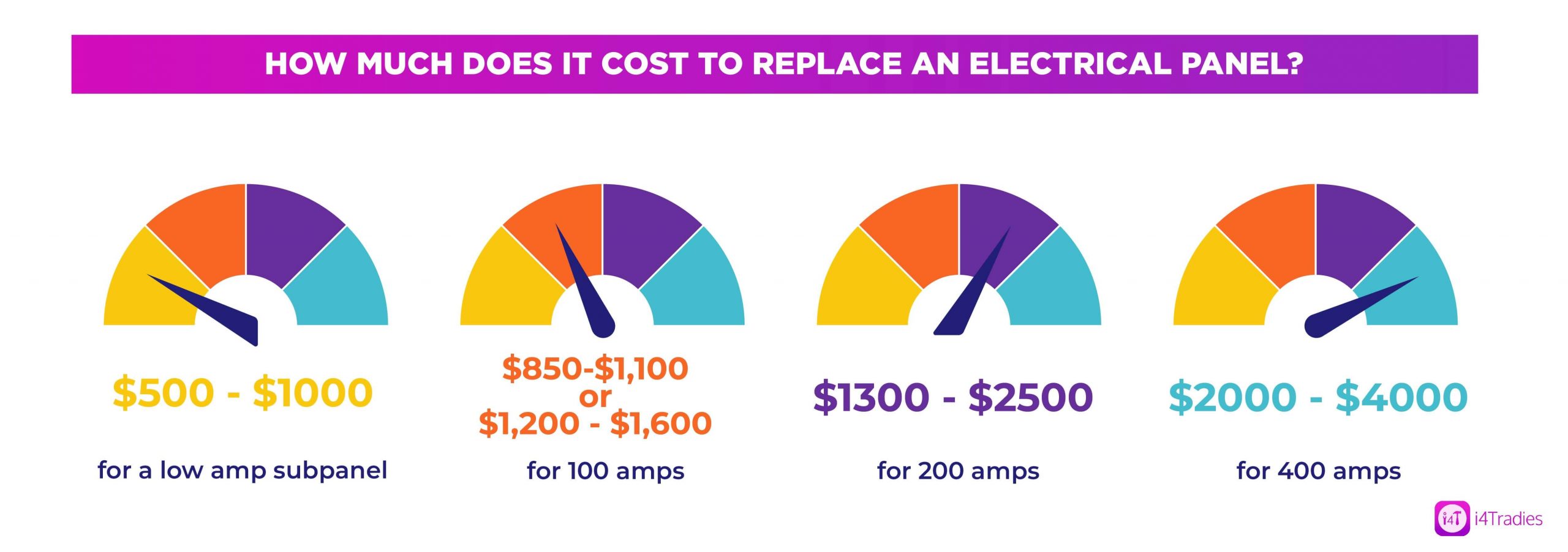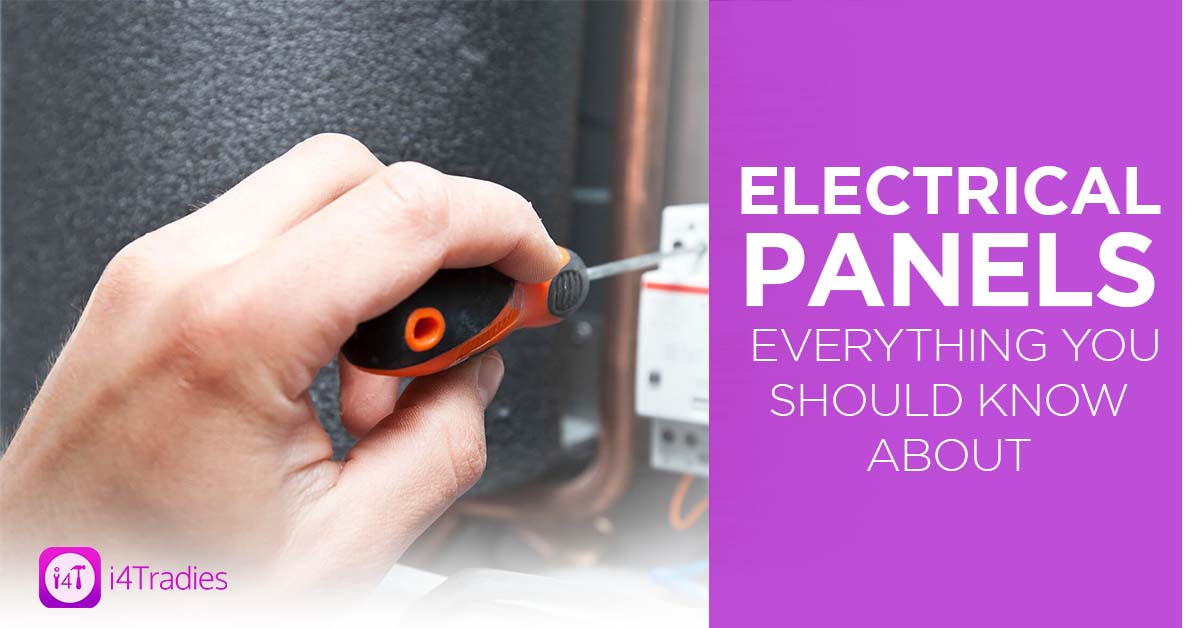When you switch on your lights or plug in an appliance, you might have experienced a minor issue in the flow of electricity. It can be confusing if you are unsure why it occurred. Is it a power outage or is it a tripped breaker? You can never know unless you know the basics of your power panel.
So let us take the time and understand how electrical panels work and how we can maintain them well to avoid any issues at home.
What is an electrical service panel?
An electrical panel is the main distribution point for electricity in your home. It is more like the brain of the house that links between external and internal wires. We generally get electricity directly from the utility company. The amount of energy used is measured in the electrical meter which is normally placed outside or next to your power panel.
When you take a peek into your panel, you will see many different wires, labels, switches and bolts. It can be quite confusing, but the structure of an electrical panel is simpler and easier to understand. There will be lugs at the top and bottom of the panel that acts as an entrance and exit point for electricity from its source.
From the source to the panel, the electricity runs through your home, allowing you to switch it on and off easily. You can completely shut down your electricity by switching it off in the electrical panels. Some panels are designed with main switches.
There are many types of electrical panels and we will take a look at them further below in this article. When talking to an electrician you will come across many terms that describe your electrical panels. Some of which are: distribution board, breaker panel, circuit panel or panelboards.
How do I know what electrical panel I have?

There are different types of electrical service panels. Not every house has all the panelboards. However, depending on the size of your house, the usage and needs of electricity you can choose to get the suitable panel.
Main Breaker Panel
The main breaker panel is a commonly used panel type that controls the electricity that is distributed in different rooms throughout your house. It is used to switch off the power in your home, but also protect the circuit breaker and identify amperage.
You will see two-pole circuit breakers inside the electrical panel which can be used for emergency shut down or to switch off when repairing minor electrical issues. This type of panel has safety features such as the ground and neutral bus bars that can prevent the panel from overheating. Whether you experience a panel wiring issue or you plug in a faulty appliance, the breaker can trip.
Main Lug Panel
It is similar to the main breaker panel, but there are no main breakers on this. The electricity wire lines run to a connector called a lug. Panels with no breakers are sometimes used as sub-panels. The main lug panel is a separate disconnect which is located at the electrical meter. In case of an emergency, you need not go into the house to disconnect the power.
Sub-panels
When you have multiple circuits in the same areas in your house, then using a sub panel is perfect. The sub-panels are commonly used to service a certain room. They have separate circuit breakers from the main panel. However, they get electricity from the panelboards.
Subpanels do not increase the power in your house. They are designed to adjust the distribution of electricity in your home. It is not practical to have more panels than there are available circuits in the main electrical panel.
Transfer Switches
Transfer switches are ideal for homes that have backup power generators. They transfer the generator power to the main electrical power through the panel.
By wiring the backup power to the breaker panel of the house, you can have a proper switching between the power panels and the backup power in case of any emergencies. You can have two different types of transfer switches: manual and automatic.
Electrical fuse box
Some homeowners have electric fuse boxes that are designed to prevent a circuit overload. There are small fuse boxes that fit inside an electrical panel. When you open an electrical fuse box you will see a set of knobs instead of switches or breakers. When there is a voltage overload the fuse will short out.
What is the life expectancy of an electrical panel?
Many homeowners are clueless when it comes to panelboards and their life expectancy. Depending on where you have installed your panels their lifespan can vary.
On average, the life expectancy of an electrical panel is between 25-50 years or more. For example, an electrical panel that is exposed to sun and rain can easily corrode in its early 20’s.
On the other hand, when the panels are placed in a safe interior it has a longer life expectancy.
There are many reasons why you must service your power panels and knowing the signs will give you an understanding of when you should replace, upgrade or service your electrical panels.
Some of the reasons shortening the life expectancy of your panels can be: due to power surges, wear and tear or a manufacturing defect. Keeping an open eye will help you identify the issue on time and fix it before it becomes expensive.
Where should I place my main electrical panel?
When planning on installing an electrical panel in your home, you should consider the 3 main factors.
- Accessibility and safety – Make sure it is placed in an easily accessible location such as a garage, basement or under the stairs. This way you will not have any issues with panel wiring or when repairing. You can also make sure that it is located in a weatherproof space to be safe.
- Utility company – When you plan to install your electrical panel, your utility company will determine where exactly it should be placed for greater efficiency. Although you or your electrician can discuss and request a different location.
- Efficiency – Planning in advance will allow you to have an easy electrical flow in your house.
How far does an electrical panel need to be from water?
When it comes to installing electrical panels in your home, you must take into consideration the wiring concerns and the distance between the outlets. An electrical panel must be extended 6 feet above the ground and should be clear of any piping or plumbing system.
Usually, the two do not interfere with each other. However, maintaining a safe distance is important. If you have panelboards installed in your laundry room, then you must have an open space of 30 inches wide and 36 inches deep as an electricity safety precaution.
The spacing in the room can be placed anywhere as long as it does not reach the water. If you are unsure about locating your panels in the right place, you can contact a professional to get the job done.
Does an electrical panel have to be on an outside wall?
The electrical panels can be installed on the interior or exterior walls. Many homeowners place the panelboards close to the electricity meter which is commonly found on the outside wall. However, many professionals suggest that the best location to place an electrical panel is your home garage or basement.
Can an electrical panel be located in a bedroom?
Yes, you are allowed to install your electrical panels in your bedroom. Many homeowners place them inside to maintain the home interior. If you have limited space it is perfectly fine to install the panels in your bedroom. However, many people do find it odd.
When installing the electrical panels in your bedroom, experts suggest that you maintain a safe distance between your bed and panelboards. If you have children or newborns, it is safe to move the breaker panel to a different location in the house.
How to know if my electrical panel is out of date?

A lot of homeowners neglect their power panels for a long time and check the panels when there is an issue or an electrical problem.
You must maintain and check your panelboards to avoid any major troubles.
An electricity overload can cause fire and other troubles to your property.
Here are some ways you can identify if your electrical panel is out of date.
Old homes– Many old houses do not have an upgraded electric fuse box or panel. If your home is over 20 years old then you should check your panels before any hazards occur.
Rusting– Placing the power panel outside can cause rusting to the metal exterior. Rusting does not always indicate that your panel is out of date. However, rather than keeping a rusted metal box, you should hire a professional to replace it.
No longer functional – If you are using a defective electrical panel, it is time to change the panel wiring, or upgrade it into something better.
Frequent shut off in circuit breakers – circuit breakers are meant to shut off and on once in a while. If you are experiencing shut off power or popping of circuit breakers too frequently, then there is an issue that needs your attention.
Loose wires– You can see the wiring in an outdated old electrical panel box, on the other hand in a modern power panel there is no visibility to check inside the panel wiring. Having loose wires can cause interruptions and damage to your electrical system. You should replace the outdated panels with more efficient modern panelboards.
Other factors that you must look out for are:
- Burning smells in your panels
- Strange noises that are coming from your electric fuse box
- Warm or too hot electrical panels
- Flickering lights
Can I replace my electrical panel myself?
Even though you have an understanding of the panel wirings, the breakers and other connectors in the electrical panel, experts advise against replacing your electrical panels on your own. When we talk about electricity and panelboards, we must understand that we are dealing with high voltage levels of energy.
Doing the wrong thing or making a mistake while wiring can cause serious injuries to yourself. Installing an electrical panel involves a complicated process of connecting different types of wires. The inside works of installing or replacing an electrical panel are dangerous and you should leave it to a professional who is a licensed electrician.
How much does it cost to replace an electrical panel?
We use more energy in our homes than ever before, to keep the house running and to eliminate any possible causes of tripped breakers and other electrical issues, you must install a panel that can handle the amperage capacity.

Depending on the total costs with the number of circuits and amperage in your home, the average cost to replace a breaker panel is $800 – $4000.
Let us breakdown the costs of replacing and installing an electrical panel for your home:
Cost of replacing an electrical panel
- $850-$1,100 or $1,200 – $1,600 for 100 amps
- $1300 – $2500 for 200 amps
- $2000 – $4000 for 400 amps
- $500 – $1000 for a low amp subpanel
It takes about 8 to 10 hours to replace or install an electrical panel in your home. The professional you hire to get the work done can normally charge on an hourly basis. Which includes a rate of $40- 100 per hour. Labour charges, materials and other costs can be up to $400-$800.
How do I know if I have 100 amp or 200 amp?
It is very simple to check the size of your electrical service in amperage. There are a few ways through which you can find out your amp.
- Check the side of your meter base (note to self this is not the power meter itself) check for the nameplate on the square base of the meter mount to find which number is written. The numbers are marked as 100amp, 200 amp and so on.
- You can also check the number on the main breaker panel.
- If you have sub-panels in your home, then you can have multiple amp ratings on the main breaker. It is common to spot a 200 amp on the main electrical panel and then spot a 60 amp or 100 amp on other smaller panels. If so, trace back the connection and get the exact amp number from the main panels.
- Another way to tell the amp is by the size of the pipe which is placed outside of your home. A 1-inch pipe indicates 60 amp service, a 1 ¼ – 1 ½ inch is a 100 amp service and a 2-inch pipe indicates a 200 amp service.
Is 100 amp service enough for a house?
Depending on the electrical load that is applied in your home, you can calculate the capacity needed, and inspect a panel for your electrical needs. The size of your electrical panel box can help determine the amp service for your home.
Many homes require a minimum amp service of 100 amps to provide enough power which can support 240volts appliances and air conditioning for a medium-sized house. Larger homes may have 150-200 amps service which support large electrical appliances such as heating. AC and other equipment.
If you need more service then you can upgrade or replace your electrical panel with the help of a professional.
What is involved in upgrading to a 200 amp service?
Your home can enjoy many benefits from upgrading your service amp to 200. However, you must know the risks, and understand the factors before making any changes in your electrical system. If you hire a professional licensed electrician then they will need to obtain a permit to upgrade your amp service.
Upgrading to a 200 amp service will involve disconnecting the power, installing the 200 amp panel wiring, and it needs to be inspected by the authorized utility company.
There is plenty of work involved when you plan to upgrade to 200-amp service. Before you take to make any changes you can follow these simple steps to check if a 200 amp service is suitable for your home.
- Check and assess your electrical needs
- Choose a suitable electrical panel
- With the help of a professional, you can install the main breaker panel, circuit breakers and other panel wirings.
- Check and confirm if all the circuits are connected
- Test the panel and system before you make any decisions.
Does homeowners insurance cover electrical panels?
Your homeowner insurance will cover your electrical panel depending on its type and age.
- It will cover any electrical wiring issue if it is caused by an accident or fire. However, it will not cover if the panel wiring issues are due to lack of maintenance, neglect or if the panelboards are out of date.
- Electrical problems such as the two older types of wiring: tube/ knub or aluminium panel wiring problems will be covered by your homeowner insurance policy
- Homeowner insurance policies do not include coverage for electrical faults caused by equipment failure or generators. However, some policies include protection against electrical faults for an additional cost.
Read more : Home Maintenance Checklist For A Trouble-Free Home
Does homeowners insurance cover electrical panel replacement?
Your homeowner insurance policy may cover electrical panel replacement like your electrical wiring coverage. It once again depends on the age of your home and the cause of damage. If your panelboards are up to date with the codes then you may get coverage from your insurance policy.
If you have an older home and your electrical panels got damaged due to a hazard causing a fire, then replacement and repair costs will be covered by your homeowner insurance.













